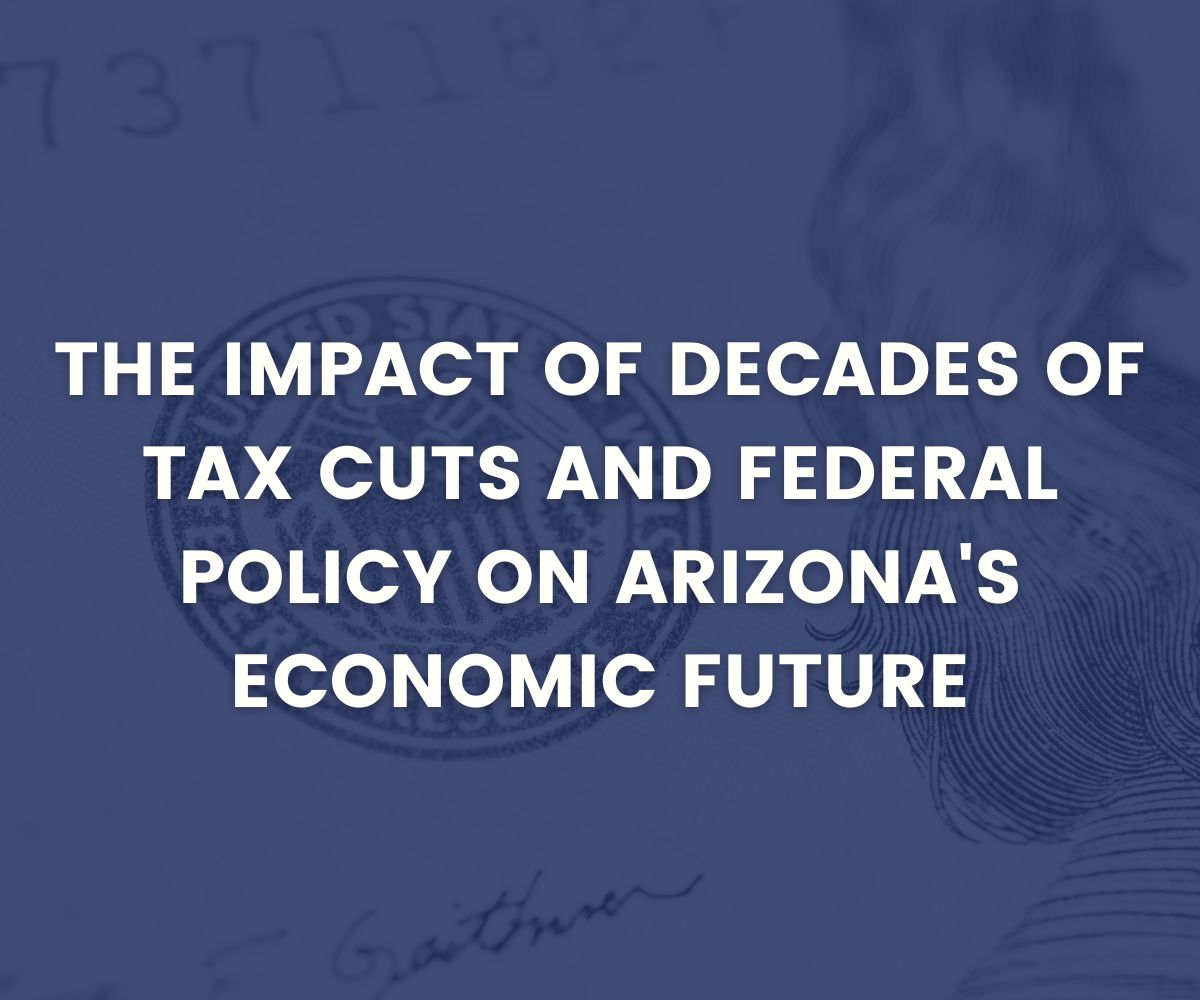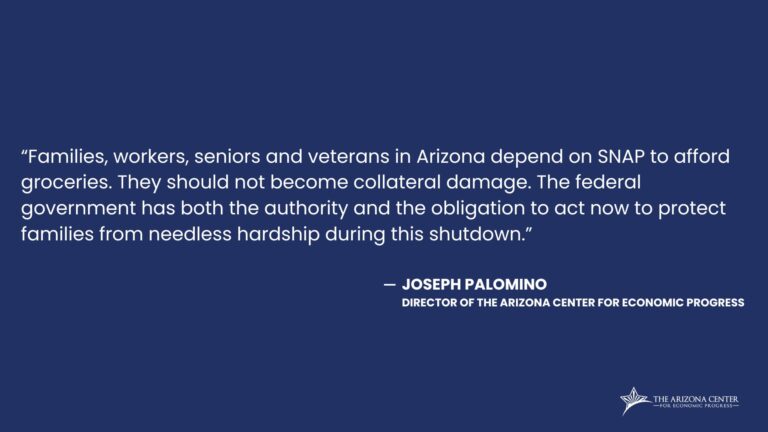
The Impact of Decades of Tax Cuts and Federal Policy on Arizona's Economic Future
Just last month, the Arizona Financial Advisory Committee (FAC) met to discuss the revenue and economic outlook for Arizona. While the panel of economists and Joint Legislative Budget Committee (JLBC) staff had projected that surplus revenues would be $612 million for FY2026 budget negotiations at the previous meeting in January, that number has since been reduced to $277 million.
As highlighted by the JLBC, monthly revenues in March 2025 for all three major tax sources (individual income tax, corporate income tax, and sales and use tax) were down. Many economists have now predicted that US GDP growth will stall in 2025, and there is a concern that state’s revenues could continue to fall in the upcoming months.
How Severe is the Dust Storm?
JLBC referenced that right now Arizona is in a dust storm in which, due to uncertainty around federal tax and budget policy, the state economy appears to be slowing down but can still see enough road ahead to proceed with caution.
However, if revenue numbers and economic indicators such as employment, consumer confidence, and business investment continue to deteriorate, the dust storm will be significantly worse and ultimately force businesses and consumers to pull off the road. Consequently, it is critical for Arizona’s policymakers to track state and federal economic indicators when determining budget priorities for the next fiscal year.
According to the Bureau of Labor Statistics (BLS), Arizona’s unemployment rate has risen by .3 percentage points from December of 2024 to March 2025 and is now at 4.1 percent, just below the US unemployment rate of 4.2 percent. Additionally, The BLS Job Opening and Labor Turnover Survey (JOLTS) for March 2025 showed national hiring rates declining in most industries and employment momentum slowing. As expected, federal job openings declined as the Executive Branch continued to eliminate positions. It is also likely that the JOLTS data is beginning to show the adverse impact that freezing or rescission of federal grants and terminating federal staff has had on other sectors, including state and local government. The job opening rate for state and local government, excluding education, decreased by 0.4 percentage points as compared to the federal government job opening rate, which declined by 1.1 percentage points.
Furthermore, consumer confidence is down for the fifth straight month as more consumers are anticipating a recession and for interest rates to remain stubbornly high, potentially indicating expectations of stagflation, i.e., simultaneous high unemployment and high inflation. Such concerns of stagflation match comments made by Federal Reserve Chairman Jerome Powell on considering how the Federal Reserve will accomplish its dual mandate to achieve stable prices and maximum stable employment.
Lastly, the US Bureau of Economic Analysis reported earlier this week that the real gross domestic product (GDP) annualized growth rate decreased by 0.3 percent in Quarter 1 of 2025. While the reason for such a drastic decline was largely the result of businesses front-loading imports before wide sweeping tariffs, other parts of the GDP equation did show some weakening, namely government spending. Many will cite that Core GDP, which examines only consumer spending and fixed business investment, was strong in Q1 of 2025 at 3 percent. However, it is important to examine the backward-looking nature of the data such that earlier consumption and business investment spending is likely not reflective of current economic uncertainty, especially when examining other indicators that are showing a weakening economy, including declines in air travel and freight volumes.
Current Federal Tax and Economic Policy is a Mirage
Expanding upon the JLBC’s desert metaphor, current federal tax and economic policy is a mirage: there is no water there.
First, evidence has shown that Trump’s tariffs during his first administration resulted in a net loss of manufacturing jobs. Such tariffs were not as broad-based as the current proposed policies, which could lead to an even greater stall in US manufacturing.
Second, as highlighted in KPMG’s JOLTS analysis, small businesses may struggle with price increases due to tariffs and are less likely to obtain exemptions from tariffs for their businesses. Additionally, as referenced by KPMG, the construction industry is already experiencing price increases due to tariffs and federal immigration policy.
Finally, current federal budget negotiations to cut programs, including SNAP and Medicaid, to extend tax cuts that primarily benefit the wealthy will likely reduce the real personal incomes of most households.
The Center for Budget and Policy Priorities (CBPP) projects that only the top 20 percent of income earners will benefit from current tariffs and proposed tax and spending cuts.
30 Years of State Tax Cuts Have Emptied the Wells
Lastly, due to 30 years of state tax cuts primarily benefiting the wealthy, including the enactment of the flat 2.5 percent state individual income tax, Arizona has less revenue to invest in housing, healthcare, and schools.
Consequently, the state of Arizona has lost billions in foregone revenue from such policies. According to projections by the Institute on Taxation and Economic Policy, reversing the flat tax, alone, would result in $2.6 billion in additional revenue. Furthermore, reversing such a policy would likely disproportionately impact the after-tax incomes of higher-income households who have been the primary beneficiaries of the policy.
Arizona has let years of tax cuts lead to a growing scarcity in state revenues. Not only do we have to say no to any new tax cuts, but it’s time we consider whether the past 30 years of regressive tax policies has best served the communities of Arizona.
Let’s work to build a progressive revenue code to invest in Arizona’s future.



